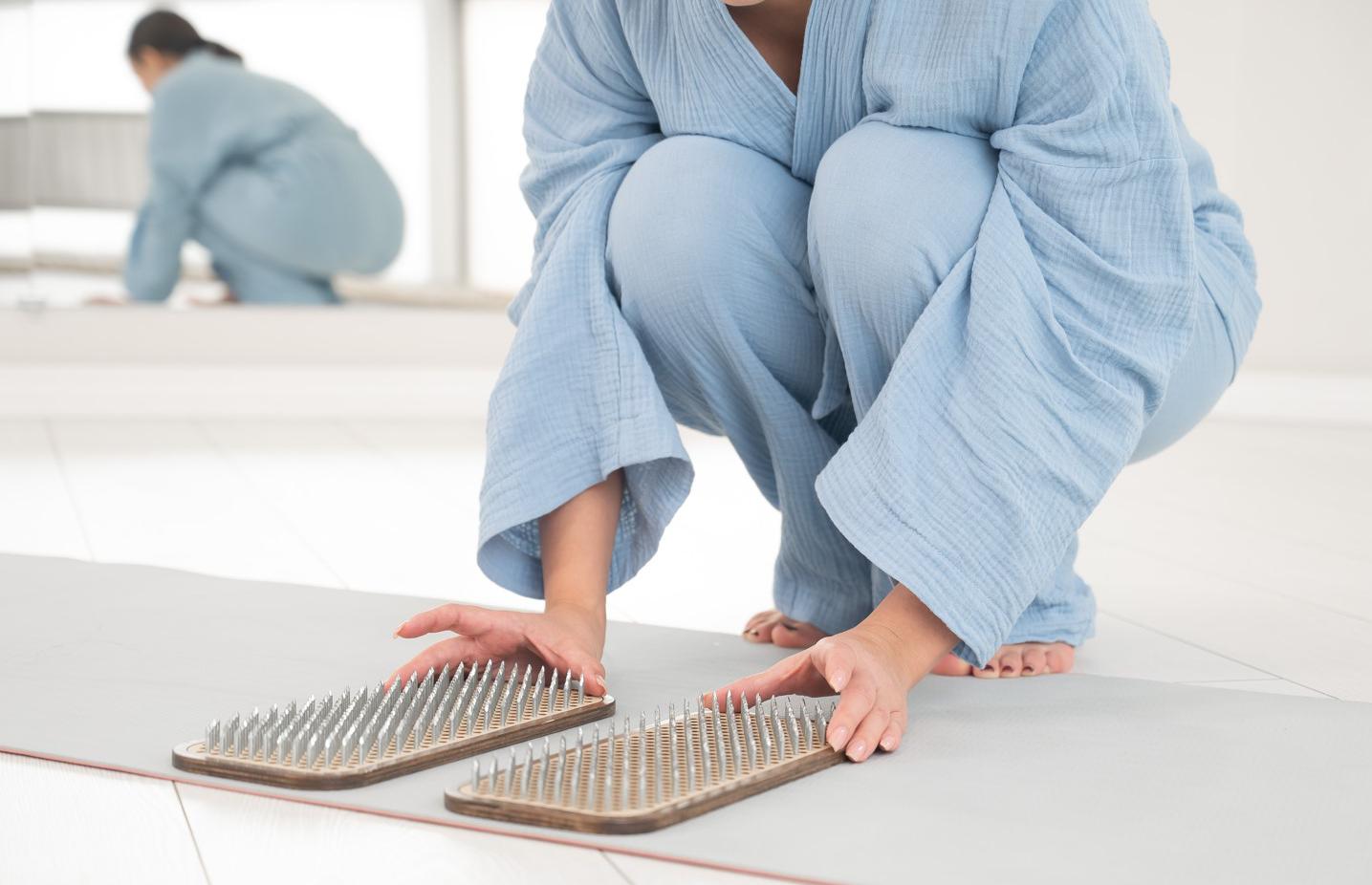
Let’s talk to experts about whether there are benefits to nailing for physical and mental health and how to stand on nails correctly.
- What is this
- How to choose boards
- Benefit
- Harm
- How to stand
- Preparation
- Regulations
- How to replace nails
- Psychologist’s comment
Stanislav Mansurov, master of nailing, teacher of the High Level dance and yoga club;
Elizaveta Kryukova, psychotherapist, specialist at the psychological platform Alter.
What is nailing
Sadhus boards should be selected according to experience
Nail cutting is a traditional practice of Indian ascetics (sadhus). These people live in monasteries (ashrams), meditate and undertake austerities. Some people practice lying on a bed of nails. It is believed that when an ascetic achieves enlightenment, he does not feel pain, but is better able to focus on meditation. It is not known for certain when ascetics began to practice such meditations. But you can find photographs from the early 20th century that show monks lying on nails (1). The drawings date back to earlier times (2).
In Western culture, standing on nails has become very popular, for which they use sadhu boards, named after ascetics. The task is to stand on the nails with your bare feet and stand for as long as possible.
The trick to standing or lying on nails is the number of nails. If you step on one nail, it will pierce the skin and leave a wound. However, if there are a lot of nails, the load will be distributed evenly and the nails will only be pressed into the skin without causing harm.
Sadhu boards
Sadhus boards should be selected according to experience. They can differ in several parameters (3):
- Nail material. Nails can be zinc, steel, copper, or combined. Nails will need to be disinfected regularly.
- Diameter of nails. The thinner the nails, the more of them there should be on the board.
- Nail pitch. Beginners are advised to buy boards with a minimum distance between nails.
- Fastening nails. In addition to conventional fastening, when the nails are tightly seated in the board, there is dynamic fastening, in which the nails will adjust to the load.
- Drawing of nails. The nails can be arranged, for example, in a square or a flower.
- Board material. Classic boards are made of wood, but you can also find plastic ones. Heavy boards are more stable.
Benefits of nailing

Standing or lying on nails is a traditional practice of Indian ascetics
Standing on nails has several purported effects that may have positive effects on mental and physical health.
Stanislav Mansurov names the main ones.
- Achieving balance. People stand on nails in order to develop the ability to maintain balance, get rid of fear, and become more resilient.
- Creation of new neural connections. There are many nerve endings in your feet, and standing on nails activates them.
- Lymphatic drainage foot massage, relieving tension from the legs.
- Standing on nails is distracting, Brings energy and relaxation at the same time.
Damage from nailing

Nailing is not recommended for people with anxiety and depression
Nailing involves experiencing strong emotions. This should be taken into account if you decide to try it.

Is it dangerous to stand on nails?
You should absolutely not stand on nails if there are open wounds on your feet: you can get additional injuries and infection.
How to stand on nails
A guide should introduce you to the practice; he will provide support, help emotionally and physically
It is recommended to start standing on nails under the supervision of a guide, he will help you get on and off the board. In addition, the guide knows how to deal with emotions.
Preparation for nailing
Nailing is an emotional and physical stress that you should prepare for in advance. It is important to consider contraindications.
Rules for performing practice
Standing on nails is not so much a physical practice as it is a spiritual one. These recommendations will help you tune in.
- Create an atmosphere like for meditation: dim the lights, light candles, turn on relaxing music.
- Prepare the surface for the boards – the floor should not be wet or slippery.
- Provide fresh air in the room.
- Don’t forget to disinfect your nails. Alcohol or chlorhexidine is suitable for this. It’s better to use your own boards.
- Don’t try to stand for a long time right away. Start your practice with, for example, three minutes. Experienced nailers can withstand 25-30 minutes or more.
- Don’t be afraid of damage, nails cannot harm you.
- Don’t be shy about your emotions. Your first sensation may be pain – this is normal.
- If the pain is severe, you can start practicing not on your bare feet, but in socks.
Alternatives to nailing
The applicator with plastic spikes is safe and convenient, it can be used on different parts of the body
Instead of sadhu boards, plastic applicators are used in physiotherapy. They provide a similar effect.
Kuznetsov applicator
A small mat with spikes made of plastic. This applicator is safe and comfortable and can be used in different ways, such as standing up or lying down on it.
Applicator Lyapko
A similar medical rubber applicator can be in the form of a roller or mat. Stanislav Mansurov considers such applicators a good way to prepare for standing on nails: “If you have not yet decided to stand on nails, then you can start with applicators. They will boost your immunity and mood.”
Expert commentary

People stand on nails in order to develop the ability to maintain balance, get rid of fear, and become more resilient.
